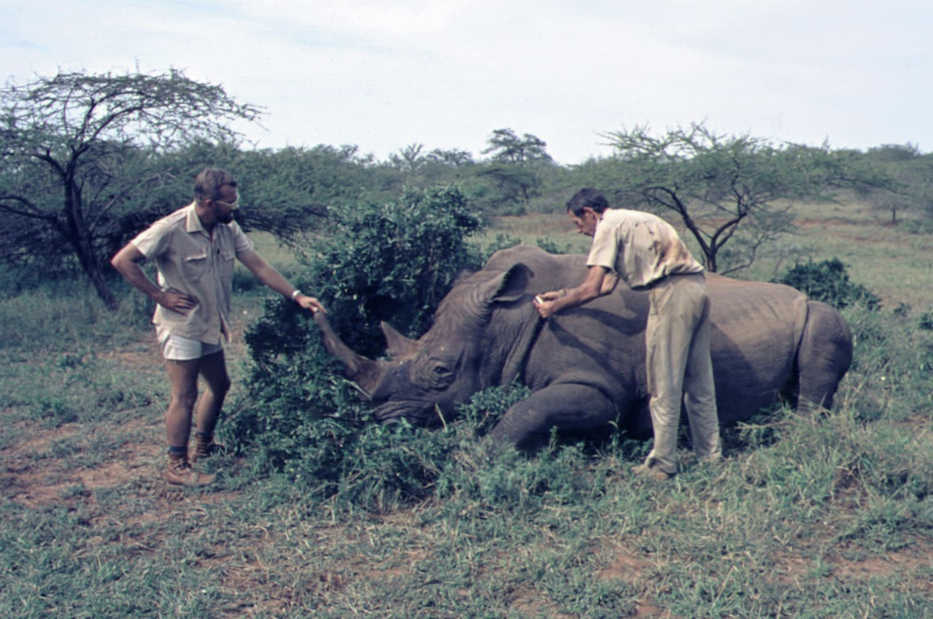Before we moved to Alaska, my family and I lived two years in South Africa’s Kruger National Park (KNP), where I conducted research on African leopards. Later, while working on the Kenai National Wildlife Refuge (KNWR), I sometimes thought about the conservation issues these distant areas had in common despite their obvious differences. Unlike the KNWR, the KNP was situated in the subtropics, the southern hemisphere on the opposite side of the planet, and held numerous larger and potentially more dangerous animals.
However, fire plays an important role in both the KNP and KNWR ecosystems. In KNP natural fires help to keep brush from encroaching into grasslands, thus supporting many grass-eating species like the African buffalo, numerous antelopes and the zebra. KNP was divided into fire management blocks bounded by fire-break roads where natural lightning-caused fires were allowed to burn or where prescribed fires were set on a scheduled basis.
On the KNWR, fire consumes older forests, sets back succession and favors winter-browse-eating species such as moose and snowshoe hares and their predators like wolves and lynx. Natural lightning-caused fires are also allowed to burn in remote wilderness areas of the KNWR, and prescribed fire is similarly used near developed areas to set back forest succession and to protect adjacent private property.
The reintroduction of extirpated native species was also a common conservation goal. Before it was established in 1926, KNP had already lost its populations of black and white rhinoceros, several antelope species and possibly the elephant. The KNP reintroduced white rhino in 1961, black rhino in 1971, and several species of antelope. The elephant came back on its own from either a small remnant population or perhaps from neighboring Mozambique. On the KNWR, extirpated caribou were reintroduced in the 1960s and 1980s but wolves, after a 50 year absence, had to return on their own.
Both the KNP and KNWR invest substantial time and resources on wildlife surveys and research in order to make science-based management decisions. The KNP routinely censuses elephant, African buffalo and most other large mammals. The KNWR, often with the Alaska Department of Fish and Game, periodically surveys moose and other ungulates and, with the U.S. Forest Service, recently used DNA to estimate the brown bear population.
I was fortunate, while in Africa, to help conduct an aerial wildlife survey in the Kalahari/Gemsbok National Park in South Africa and Botswana. There we counted widely scattered groups of gemsbok, springbuck, red hartebeest, ostrich and other wildlife while flying long aerial transects over the Kalahari Desert. I also took part in the live-capture of white rhinoceroses in the Umfolozi-Hluhlulwe Game Reserve in South Africa’s KwaZulu-Natal Province during a period when the reserve still had an abundance of white rhinos.
Both the KNP and KNWR cope with so called “problem” wildlife. The KNP’s “problem” animals, among others, included elephants and lions which at times had to be destroyed if they caused damage outside the park. On the Kenai Peninsula the brown bear is sometimes considered a “problem” animal if its behavior conflicts with people. Moose are sometimes also considered to be “problem” animals if they become aggressive toward people or when they are struck by vehicles on the highways.
But there are also major differences between the KNP and KNWR. Although poaching rhinoceros for their horns and elephants for their ivory were not major problems when we lived in KNP in the 1970s, it soon become significant throughout Africa. The number of black rhinoceros in Africa in the 1970s fell from 70,000 to less than 5,000 today because of poaching. In 2013 alone, 1,004 rhinos were killed by poachers in South Africa. Fortunately poaching is not a major issue on the KNWR.
KNP still struggles with the “elephant management dilemma”: too many elephants confined to a limited space that provides only a fraction of their long-life requirements. In the 1960s and 1970s park officials annually culled about 7,000 elephants to reduce their detrimental impact on the park’s vegetation and biodiversity. Although since discontinued, managing elephants in KNP still remains controversial.
Finally, unlike the KNWR, KNP officials in the 1970s had to deal with with hundreds of refugees fleeing into the park and encountering armed militia and land mines along the park’s eastern boundary because of the war for independence in neighboring Mozambique.
I considered myself fortunate to have worked in one of Africa’s oldest, largest and most diverse national parks before coming to Alaska. I learned many of the planet’s conservation issues are similar. Consider reading “Shaping Kruger” by Mitch Reardon if you want to learn more about wildlife conservation in KNP.
It is said that conservation is a never-ending battle. As the rapidly increasing human population’s demand for the planet’s limited space and its natural resources intensifies, the conservation challenges for parks, refuges, and reserves, regardless of their location on the planet, will unfortunately become ever more challenging.
Dr. Ted Bailey, a retired Kenai National Wildlife Refuge wildlife biologist, has lived on the Kenai Peninsula for 37 years. His book “The African Leopard: Ecology and Behavior of a Solitary Felid” details his research in South Africa. You can find more information about the refuge at http://kenai.fws.gov or http://www.facebook.com/kenainationalwildliferefuge.

